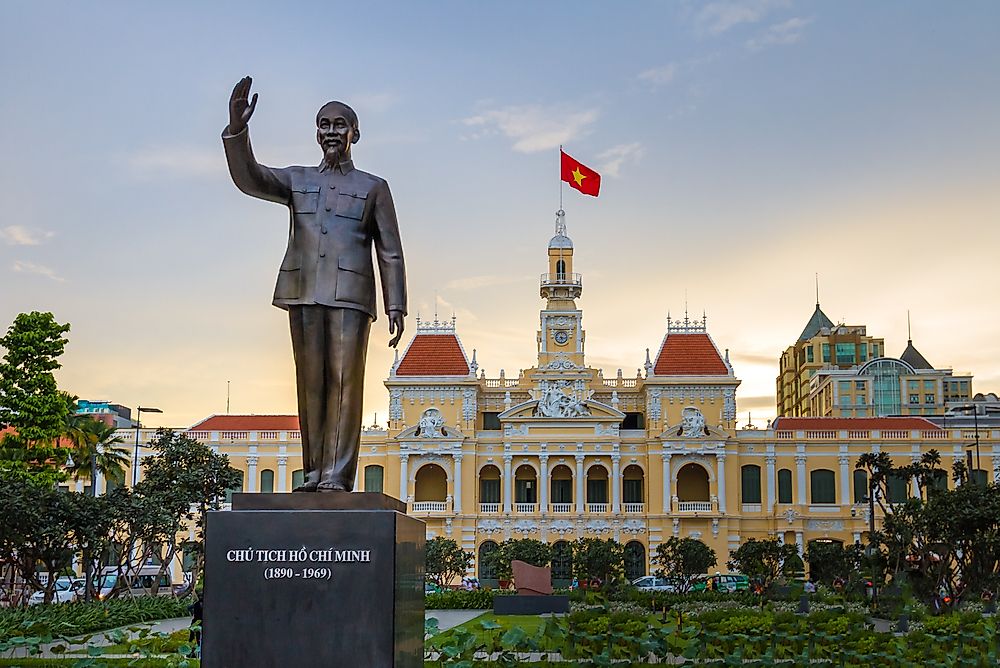Ho Chi Minh - Figures in History

Ho Chi Minh was a Vietnamese Communist revolutionary leader. Minh was an important figure in the establishing of the Democratic Republic of Vietnam in 1945. He also played a significant role in the creation of the Viet Cong and the People's Army of Vietnam during the Vietnam War. Ho Chi Minh led his country to independence through numerous challenges and battles.
5. Early Life
Born Nguyen Sinh Cung on May 19, 1890, Ho Chi Minh had one sister and two brothers. As a young boy, Minh studied alongside his father before getting a formal education from Vuong Thuc Do who was a scholar. While Minh was sharpening skills in colloquial Vietnamese writing, he had already mastered the art of Chinese writing which is mandatory for any serious study of Confucianism. Aside from his relentless study endeavors, Minh loved adventure, going fishing, and flying kites. At the age of 10, following Confucian customs, his father gave him a new name: Nguyen Tat Thanh meaning "Nguyen the Accomplished".
4. Contributions
Ho Chi Minh is considered one of the revolutionaries who led the Vietnamese Nationalist Movement and eventually served as North Vietnam's President. Minh was a symbol for the nature of Vietnam's modern cultural identity. Ho Chi Minh excelled as a teacher, strategist, guerrilla fighter, creative thinker, leader, negotiator, journalist, poet, unifier and an internationalist.
3. Rise to Power
During World War 2, Minh established the Indo-Chinese Communist Party in 1930. Following the 1941 Japanese invasion of Indo-China, Minh founded the Viet Minh which essentially was a communist independence movement. Minh declared the independence of Vietnam following the end of World War II. Vietnam's declaration of independence resulted in battles with the French who owned the colony at the time. Minh declared war against the French Union on December 19, 1946, which marked the beginning of the Indochina War. Between 1945 and 1955, Ho Chi Minh was the prime minister of the Democratic Republic of Vietnam and the republic's president between 1945 and 1969.
2. Challenges
Minh's relationship with his father was unloving, restrictive, and unhappy which affected his ability to relate with people. Minh suffered through decades of exile then war, and he endured torture and prison in China during the early 1940s when he was already in his fifties. As a guerrilla leader and as president of the Democratic Republic of Vietnam, Minh lived under the basics of conditions in the caves of Cao Bang while under attack of the French colonialism. Later on in his life, Minh suffered from multiple health issues including diabetes which deterred his political career.
1. Death and Legacy
Ho Chi Minh passed away on September 2nd, 1969 after suffering from heart failure. He died at his home in Hanoi when he was 79 years of age. The embalmed body of Minh is on display in Ba Dinh Square in a mausoleum in spite of his wishes to be cremated. Minh lives behind a great legacy. On July 2nd, 1976, Saigon the former capital city of South Vietnam was officially named Ho Chi Minh City. A massive influx of people line up every day just to pass by his embalmed body in the mausoleum in silence. The Ho Chi Minh Museum is dedicated to the works and life of Ho Chi Min. The bust and portrait of Minh are prominently featured in many classrooms, public buildings, and several families' homes in Vietnam. Minh's image is also featured in all Vietnamese currency notes. A personality cult around Minh has also been maintained by the communist regime since the 1950s.











